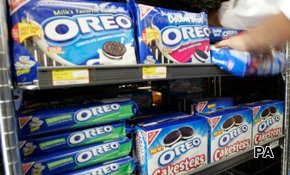
The appetite for plant-based meat substitutes: Identifying new audiences for Beyond Meat
Plant-based meat alternatives have gained widespread popularity in the last several years among vegans, vegetarians and meat eaters in the US.
Beyond Meat is one of the biggest players in plant-based meat manufacturing with roughly 9% of US adults saying they would consider buying from the brand over the last three years, according to YouGov BrandIndex.
What this data also points to is a significant segment of untapped consumers who have not yet tried Beyond Meat products and this analysis will explore a few of the market opportunities that the plant-based meat company can tap into among potential customers.
Specifically, we’ll take a close look at a subset of the US population that fit the following criteria:
- Are aware of Beyond Meat but have never purchased from the brand
- Holds a positive or neutral view of the company
- Say they are open to substituting meat/dairy products with plant-based alternatives
Let’s dig into the data and answer some of the big questions around Beyond Meat’s potential customers including who they are and what their views toward sustainability, eating and health are.
Are there differences between Beyond Meat’s potential customers and existing customers?
One of the keys to identifying growth opportunities is to see if there are any demographic differences between a potential customer and current customer groups.
This type of audience analysis can help brands double-check if their thinking and marketing strategies should be tailored differently for a group they are trying to attract versus one they are trying to retain.
Here’s what we know about Beyond Meat’s potential customers when compared against its existing customers:
- They overindex as Gen X (32% vs. 27% of current customers) and Boomers (27% vs. 20%)
- They are less likely to be men (47% vs. 54% of current customers)
- They overindex as living in lower income households (40% vs. 34% of current customers)
- They are less likely to be parents of a child under the age of 16 (20% vs. 36% of current customers)
These demographic differences indicate that Beyond Meat’s potential customers are a distinct group from that of the company's existing customers. We see even further differences when comparing these group’s social and environmental concerns.
For example, while environmental policy (44%) and sustainability in retail (26%) are top issues to large shares of Beyond Meat’s current customers, the company’s potential customers are considerably less likely to say so (35% and 17% respectively).
Beyond Meat’s potential customers and existing customers are also distinct in their views on sustainability. The former segment is significantly less likely to say they consider themselves environmentalists (58% vs. 68% of current customers) and are also less likely to say they try to buy from only companies who are socially and environmentally responsible (49% vs. 67%).
In a nutshell, Beyond Meat’s potential customers don’t seem to care about the environment to the degree that its existing customer base does. This presents a problem for Beyond Meat given the company has built its branding around positively impacting the environment, society, human health, natural resource conservation and animal welfare.
If the company won’t influence this group as much by platforming on environment and sustainability, does it have any other chance of convincing new customers to try its products? There does seem to be another course on the table and it's through their appetites.
A healthy approach to Beyond Meat’s marketing
One key factor that makes this market segment promising is their willingness to replace red meat with plant-based substitutes. A look at the group’s eating habits reveals that they are significantly more likely to be meat eaters (red meat and/or poultry) when compared to Beyond Meat’s current customers (51% vs. 25%.
Building on this, a quarter of this group identifies as flexitarians, meaning they primarily follow a vegetarian diet but occasionally eat meat (25%). These diets represent a significant opportunity for Beyond Meat to expand its customer base, especially with consumers who clearly have a taste for meat but want to reduce their meat intake at the same time.
Even further in-roads can be made among this group by increasing their awareness of the potential health risks associated with consuming excessive amounts of red meat. Several bodies of evidence show a correlation between high intake of red/processed meats and a higher risk for heart disease, cancer and diabetes. Other studies indicate that fatty red meats are triggers for irritable bowel syndrome (IBS) symptoms and can lead to poor sleep patterns.
Health can be a key factor to winning over many of Beyond Meat’s potential customers, especially as this group over indexes in their propensity to say they are changing their eating habits to improve their health (73% vs. 62% of current customers).
Pairing this openness to making dietary changes with the group's likelihood to self-report that they’ve been diagnosed with conditions such as high blood pressure (26%), sleep disorder (12%) and IBS (8%) makes these consumers a prime market for Beyond Meat to resonate with and play a role in addressing their health problems.
Armed with this type of knowledge, Beyond Meat can begin to rework its positioning and marketing mix among this group of potential customers to better personalize their campaigns and inspire this audience towards a more health-conscious approach to eating.
Make smarter business decisions with better intelligence. Understand exactly what your audience is thinking by leveraging our panel of 20 million+ members. Speak with us today.
To receive monthly insights about the FMCG industry register here.
To read YouGov’s latest intelligence on the FMCG sector explore here.
Photo by Dan Gold on Unsplash

































